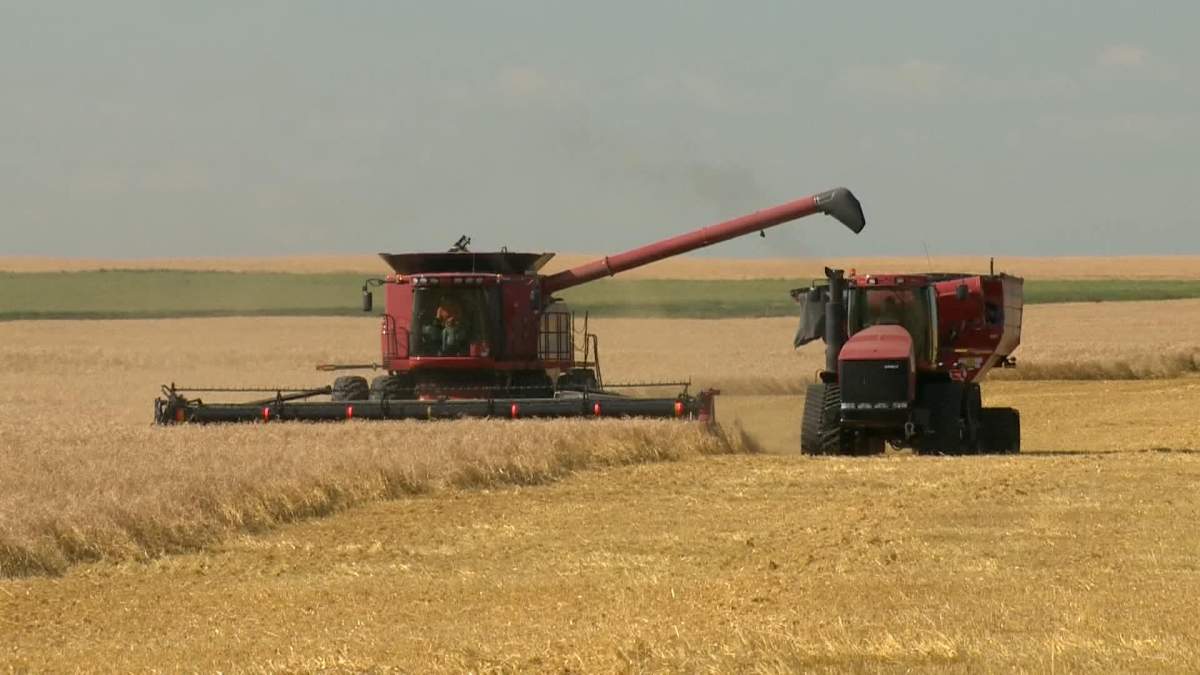Producers are reporting mixed yield results as progress on the 2021 harvest in Saskatchewan continues.

Saskatchewan Agriculture reported Thursday that 20 per cent of the crop is now in the bin, well ahead of the five-year average of four per cent for this time of year.
In the weekly crop report, Sask Ag said another five per cent of the crop is swathed and 14 per cent is ready to straight combine, ahead of the five-year average of seven per cent.
However, the report said some producers are indicating that yields are worse than they expected.
Other producers who received timely rain are reporting yields that are closer to average.
Topsoil conditions continued to decline across the province, with a vast majority of the land very short on moisture.
Cropland topsoil moisture is currently rated at four per cent adequate, 29 per cent short and 67 per cent very short.
Hay and pasture land topsoil moisture is currently rated at two per cent adequate, 21 per cent short and 77 per cent very short.
- ‘Really challenging issue’: Many B.C. communities still at high risk for flooding
- Mailing in your taxes? CRA says changes are coming amid push to digital
- Cold warnings across the Prairies forecast wind-chill temperatures near -45 C
- Canadian military member arrested, charged in foreign interference probe
Sask Ag said the little rain received in the past week is not enough to reverse the moisture deficit and will not make a difference in this year’s crop yield.

Get daily National news
It will, however, benefit pastures that no longer have cattle grazing on them. The crop report said this will provide a chance for those pastures to recover from the effect of the severe drought conditions.
The rain will also delay producers from combining.
Overall, Sask Ag said 83 per cent of the winter wheat, 75 per cent of the fall rye, 64 per cent of the field peas and lentils, 25 per cent of the barley and 13 per cent of spring wheat has been combined.
An additional 12 per cent of canola has been swathed or is ready to straight-cut.
Relief measures
A number of relief measures have been announced weeks for producers affected by the drought.
Last week, the Saskatchewan government announced $119 million in direct support to livestock producers.
Saskatchewan has also requested the federal government provide its full 60 per cent cost-share to the AgriRecovery program to increase the total to $297 million.
The program will provide a per head payment to help maintain female breeding stock.
Saskatchewan Crop Insurance Corp. is doubling the low yield appraisal threshold values for its customers who salvage their cereal or pulse crops as feed, without negatively impacting future individual coverage.
SCIC said customers should contact their local office first to discuss options before they graze, bale or silage any damaged crops.
The Saskatchewan government said it is providing relief to livestock producers by temporarily increasing the maximum funding from the Farm and Ranch Water Infrastructure program to $150,000 from $50,000.
The program is for dugouts, wells and pipelines for agriculture use, with the first $50,000 based on a 50-50 cost share and the remaining $100,000 on a 70-30 government-producer cost share.
More information on the program is available by contacting the Agriculture Knowledge Centre at 1-866-457-2377.
The federal and provincial governments have also increased the 2021 AgriStability interim benefit payment percentage from 50 per cent to 75 per cent for Saskatchewan producers.
The interim benefit provides the opportunity for producers enrolled in AgriStability to access a portion of their benefit early, to help support losses and cover costs.
Farmers stress line
Sask Ag said the Farmers Stress Line is available 24 hours a day for any needed support at 1-800-677-4442.
The service is run by Mobile Crisis Services Regina and all calls are confidential.







Comments